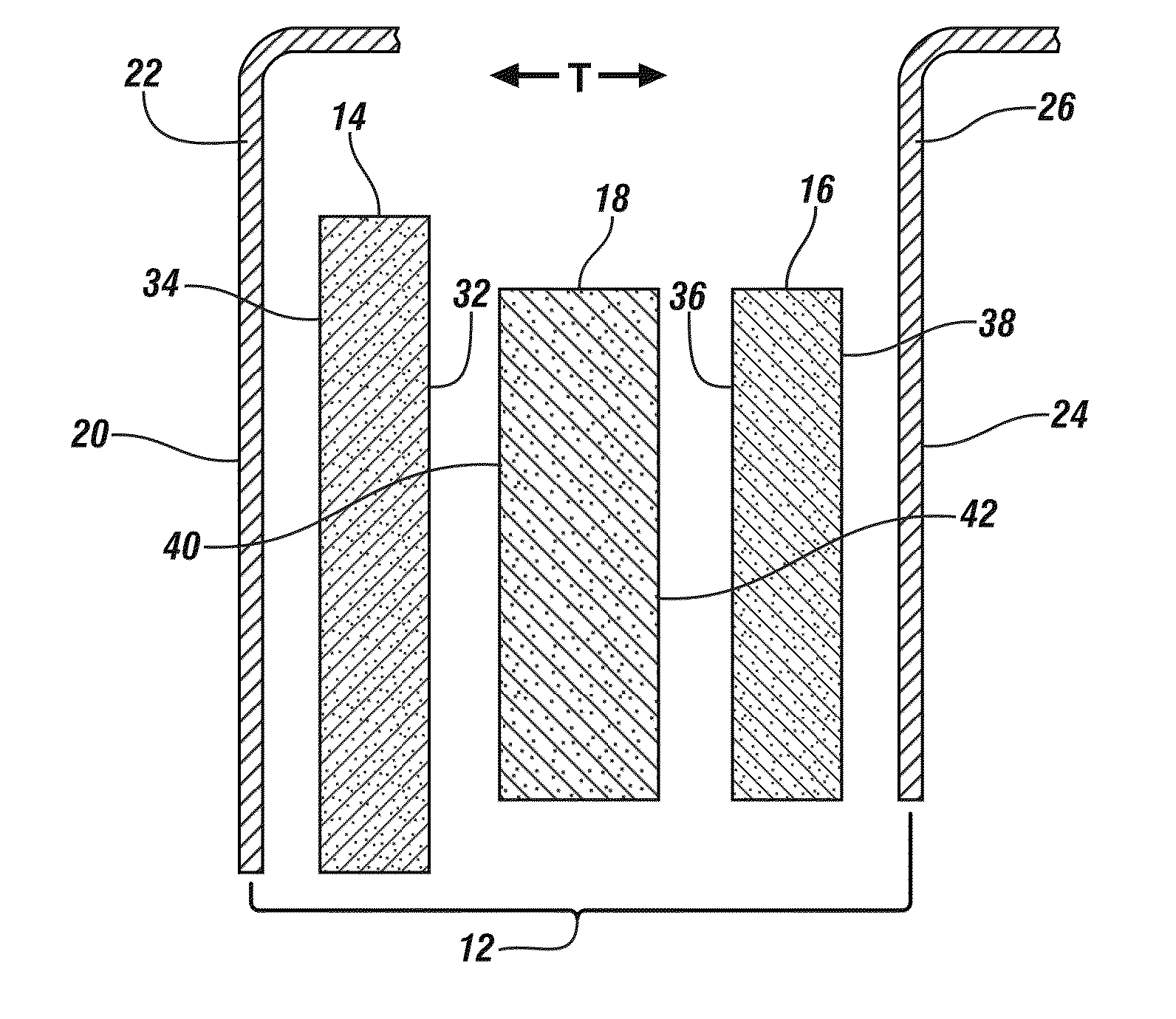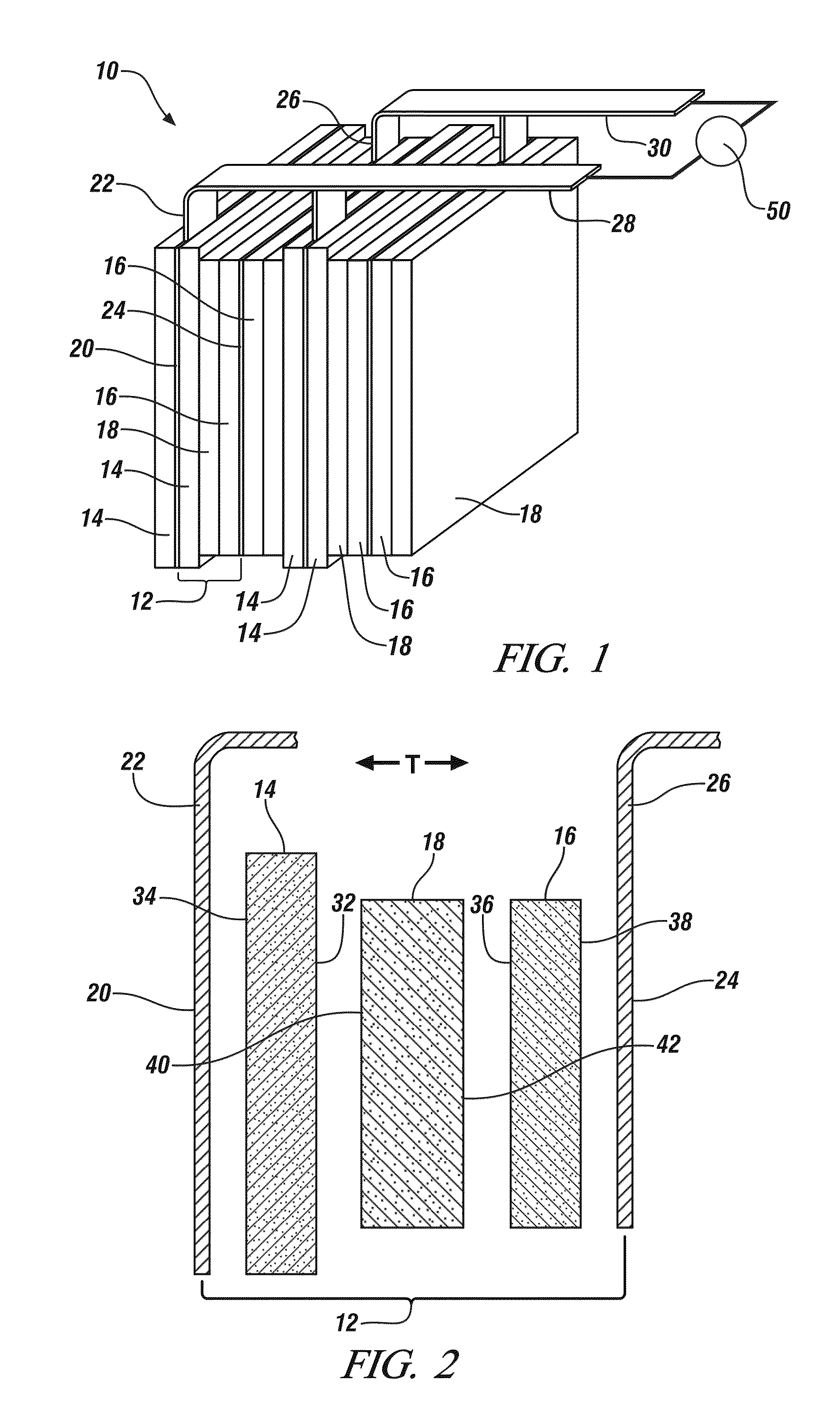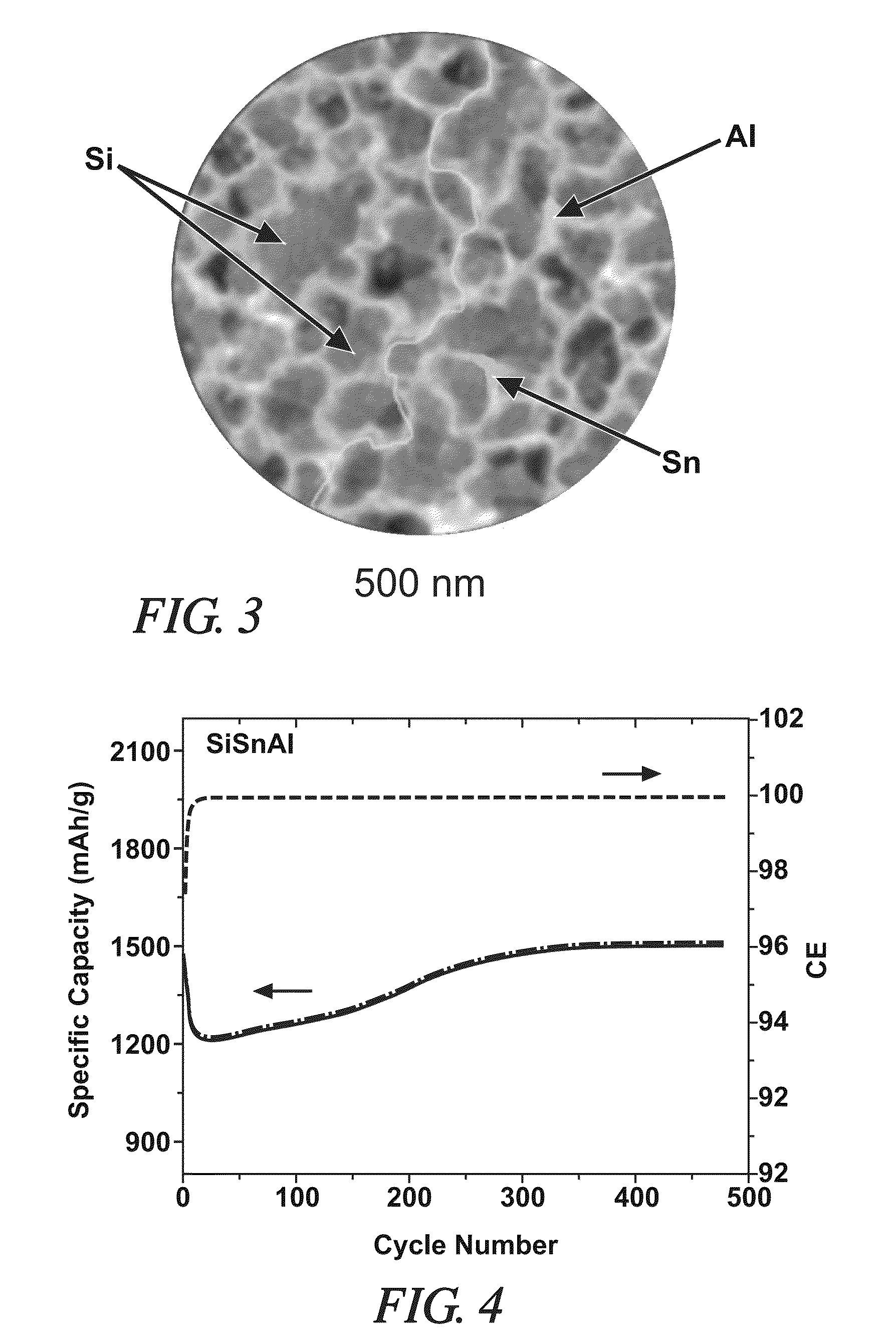Multi-phase separated silicon based alloys as negative electrode material for lithium batteries
a lithium battery and multi-phase separation technology, applied in the direction of non-metal conductors, cell components, conductors, etc., can solve the problems of rapid capacity degradation, low capacity for such lithium insertion, fracture of active silicon materials, etc., to improve the lithium insertion capacity of each cell, improve the charge storage capacity of lithium, and improve the effect of cycling stability
- Summary
- Abstract
- Description
- Claims
- Application Information
AI Technical Summary
Benefits of technology
Problems solved by technology
Method used
Image
Examples
Embodiment Construction
[0022]An exemplary and generalized illustration of a lithium-ion battery 10 is depicted in FIG. 1. The lithium-ion battery 10 shown here includes several thin rectangular-shaped electrochemical battery cells 12 that are each bracketed by metallic current collectors. The electrochemical battery cells 12 are stacked side-by-side in a modular configuration and, in this example, connected in parallel. A lithium-ion battery 10 may be formed of many like electrochemical cells in electrical series or in parallel connection to form a lithium ion battery that exhibits the voltage and current capacity demanded for a particular application. It should be understood the lithium ion battery 10 shown here is only a schematic illustration. FIG. 1 is presented to show the relative position and physical interactions of the various components that constitute the electrochemical battery cells 12 (i.e., the electrodes and the separator); it is not intended to inform the relative sizes of the electrochem...
PUM
| Property | Measurement | Unit |
|---|---|---|
| Thickness | aaaaa | aaaaa |
| Size | aaaaa | aaaaa |
| Size | aaaaa | aaaaa |
Abstract
Description
Claims
Application Information
 Login to View More
Login to View More - R&D
- Intellectual Property
- Life Sciences
- Materials
- Tech Scout
- Unparalleled Data Quality
- Higher Quality Content
- 60% Fewer Hallucinations
Browse by: Latest US Patents, China's latest patents, Technical Efficacy Thesaurus, Application Domain, Technology Topic, Popular Technical Reports.
© 2025 PatSnap. All rights reserved.Legal|Privacy policy|Modern Slavery Act Transparency Statement|Sitemap|About US| Contact US: help@patsnap.com



